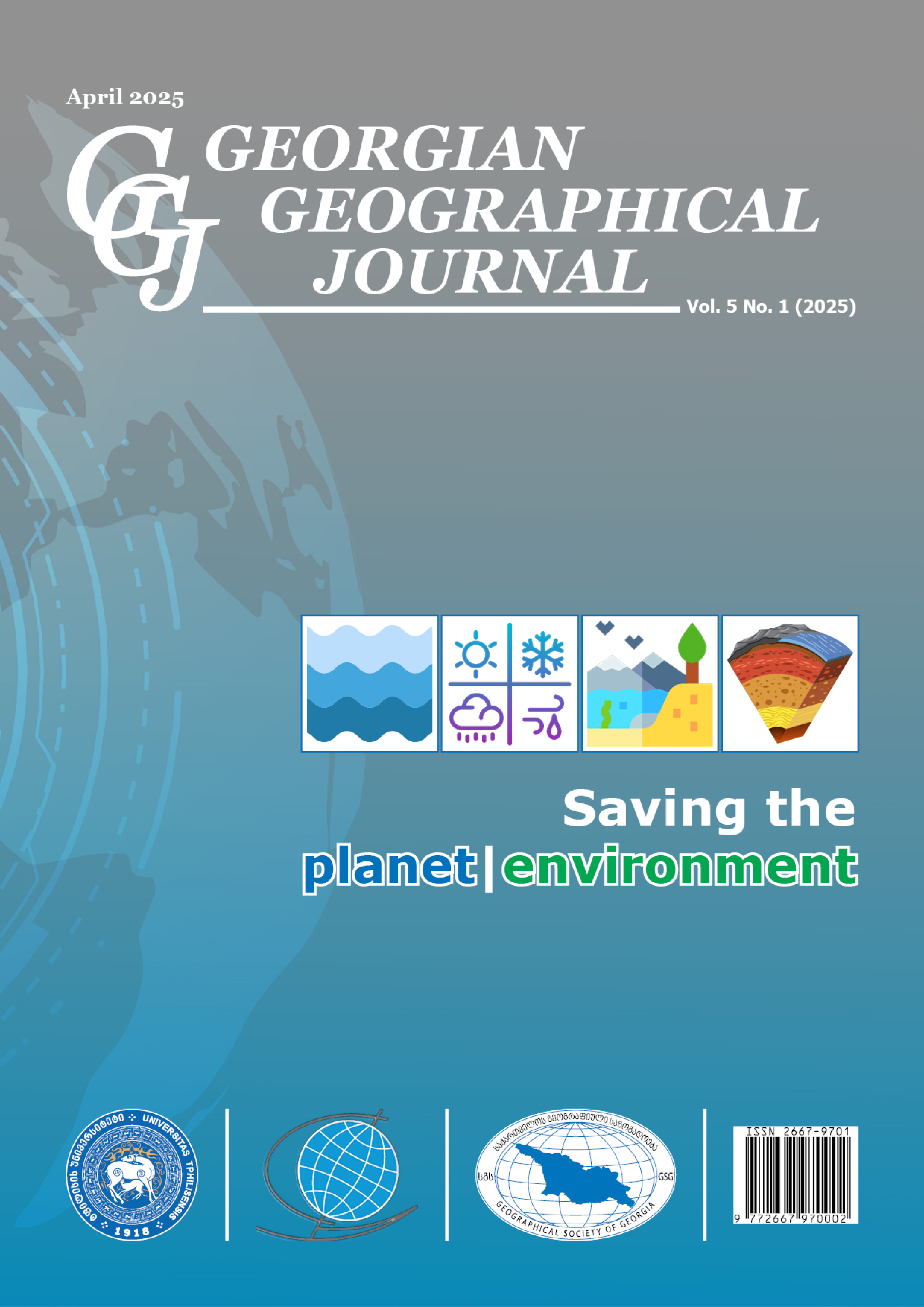Cartographic Heritage of the Institute of Geography
DOI:
https://doi.org/10.52340/ggj.2025.05.01.01Keywords:
cartographic heritage, mathematical basis, geodesy, cartographer, topographer, maps, scientific directionAbstract
The Vakhushti Bagrationi Institute of Geography at Ivane Javakhishvili Tbilisi State University preserves a rich and multifaceted cartographic legacy, yet its chronological development and evaluation remain largely unexamined. Georgian cartographic traditions trace their roots to the seminal works of Vakhushti Bagrationi (1696–1756), whose Description of the Kingdom of Georgia and accompanying atlas marked the birth of Georgian geographic science. These foundational works, now part of UNESCO’s Memory of the World Register, influenced subsequent generations of Georgian scholars. In the early 20th century, Ivane Javakhishvili and Aleksandre Javakhishvili significantly advanced historical and geographical research through the production of thematic maps, including those representing state borders, natural resources, and agricultural zones. Collaborating with topographers such as Sergi Tskhakaia, they institutionalized Georgian cartography through the establishment of the Cartography Cabinet (1924), which later evolved into the Cartographic Institute and merged with the newly founded Institute of Geography in 1933. Throughout the Soviet era and into independence, the Institute expanded its activities, producing numerous thematic, physical, and educational maps, including the 1964 Georgian SSR Atlas—considered the country's first national atlas. Pioneers such as A. Aslanikashvili advanced cartographic theory, contributing works that gained international recognition, while the institute contributed to major projects abroad, such as the National Atlas of Cuba. Thematic atlases addressing climate, landscapes, tourism, and socio-economic development have remained key outputs, including recent region-specific publications like the Kakheti Atlas (2023). Technological advancements ushered in the use of GIS and digital mapping for both printed and web-based formats, including 3D general maps for educational use. Today, the institute continues to integrate traditional geographic knowledge with modern cartographic methodologies, developing regional web atlases and promoting sustainable development through spatial analysis. The evolution of Georgian cartography, deeply rooted in historical scholarship and driven by modern scientific needs, reflects a continuous pursuit of geographic understanding and national identity through map-making.
Downloads
References
Javakhishvili, A. (2015). Biobibliography. Tbilisi.
Aslanikashvili, A. (1968). Cartography, issues of general theory. Tbilisi.
Aslanikashvili, A. (1974). Metacartography, main problems. Tbilisi. Metsniereba.
Cheishvili, O. (1977). Short Geographical Reference. Tbilisi
Kharadze, K. & Javakhishvili, Sh. (2003) Georgian travellers, geographers, explorers of nature. The Encyclopedic Reference Book. Tbilisi
Vakhushti Bagrationi Institute of Geography 50. 1984, Tbilisi
Matureli, I. (1990). Cartographic Heritage of Vakhushti Bagrationi. Tbilisi
Jorbenadze, S. (1968). The short history of Tbilisi University. Tbilisi
Appendix
Vakhushti Bagrationi Institute of Geography, Academy of Science of Georgian SSR (1964). Atlas of the Georgian SSR. Tbilisi-Moscow
Vakhushti Bagrationi Institute of Geography (1992). Educational Geographical Atlas of Georgia. Tbilisi: Ganatleba
Vakhushti Bagrationi Institute of Geography (1989). Georgian Resorts and Resort Resources. Tbilisi-Moscow
Vakhushti Bagrationi. Atlas of Georgia, XVIII century. Jubilee edition (1997). Tbilisi: Cartography Factory
TSU, Vakhushti Bagrationi Institute of Geography (2012). National Atlas of Georgia. Tbilisi: Cartography Factory
National Atlas of Cuba. Havana _ Moscow. Publishing House GUGK, 1970, 132 p.
Polarimetric atlas of the moon. Publishing house “Metsniereba”, Tbilisi, 1982, 31 p.
Nana Bolashvili (ed.), Andreas Dittmann (ed.), Lorenz King (ed.), Vazha Neidze (ed.). (2018). National Atlas of Georgia. Franz Steiner Verlag.
Downloads
Published
How to Cite
Issue
Section
License
Copyright (c) 2025 Georgian Geographical Journal

This work is licensed under a Creative Commons Attribution 4.0 International License.
This work is licensed under a CC BY Attribution




